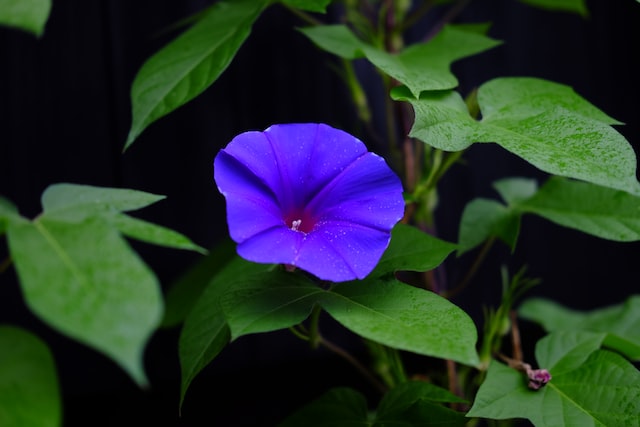Vegetable gardeners won’t enjoy the sight of morning glory vines cutting into their crops. These vines can be an invasive issue in many agricultural areas, outcompeting native plants for sunlight, water and nutrients.
Vegetative plants grow quickly, so it’s important to take an extensive inventory of your garden. Pull up mature vines as soon as you spot them to prevent reseeding and ensure a tidy space for planting new seeds.
You can also smother the weeds with fabric or mulch to prevent their growth. A barrier is an effective way to control morning glory vines while protecting other parts of your garden from damage.
Eliminate noxious weeds using appropriate methods and tools. For best results, utilize a combination of cultural, biological and chemical controls.

Steaming
The most effective way to eradicate morning glory vines from your vegetable garden is by steaming them. Direct the steam directly on their foliage, as close as possible. The vapors will kill both leaves and roots of the morning glory, effectively eliminating it permanently.
Another method for eliminating vines is burning them. While this may not be a safer alternative than flame torches, burning vines offers the advantage of heat and ash that won’t harm nearby vegetation. Unfortunately, it can also be an arduous and time-consuming process.
If you are unable to eliminate weeds manually, applying an herbicide may be your best bet. Glyphosate is a powerful non-selective herbicide that will destroy vines and their rhizomes without harming any surrounding plants.
Glyphosate or other preemergent herbicide can be applied to morning glory, but it’s important to avoid treating desirable plants nearby since glyphosate will inhibit their ability to absorb essential nutrients. When using herbicides on morning glory, use small amounts and mix it with water so as not to harm other plants in the area.
Before burning morning glory, make sure the plant is completely dry. Doing so prevents wilting of the foliage which makes it more vulnerable to burning.

Composting
If possible, compost your morning glory leaves and stolons. Doing so can reduce the amount of pesticides in your compost, as well as keep your soil healthy.
Compost can also be added to your mulch, improving its quality and providing benefits to other plants.
Alternately, you can use fertilizers to promote the growth of your garden. While they may be costly, you’re using them to promote a healthy environment for other plants.
It is essential to note that this will be a long-term battle, so be patient and persistent in your efforts to eradicate morning glory vines from your yard. It will likely take three to five years before they are completely eradicated, and the process can be tedious at times.
